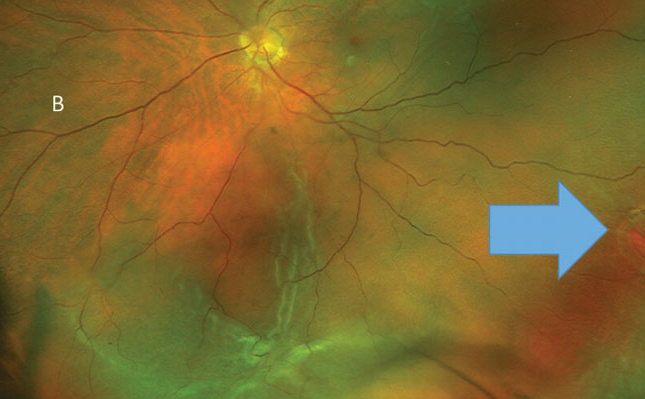 |
|
Macula-off RRDs were associated with increased risk of postoperative complications such as CME and ERM. Photo: Mohammad Rafieetary, OD. Click image to enlarge. |
Primary rhegmatogenous retinal detachments (RRD) are addressed with pneumatic retinopexy, scleral buckling and pars plana vitrectomy (PPV), depending on the location of the retinal break. Despite treatment, however, many eyes end up with long-term complications such as cystoid macular edema (CME) and epiretinal membrane (ERM). Researchers recently investigated incidence and risk factors associated with CME and ERM after primary RRD repair and found that the state of the macula as well as the type of surgical repair played a role in risk.
The study included 62 eyes with RRD that underwent either scleral buckling or PPV. The researchers reported that CME occurred in one-third of PPV patients regardless of ERM formation. The scleral buckling group had no cases of CME.
Regardless of surgical procedure, macula-off RRD increased the risk of CME vs. macula-on RRD (OR: 4.3). In the PPV subgroup, CME risk was 1.73-times greater among macula-off RRD.
Additionally, the researchers observed that combined cataract surgery and PPV increased the risk of CME by 3.3 times vs. PPV alone. Internal limiting membrane (ILM) peeling increased the risk of CME by 1.8 times. The researchers added that 28% and 29.4% of patients who didn’t and did undergo ILM peeling had ERM, respectively.
Based on these findings, the researchers concluded that scleral buckling is “advisable in patients with RRD sparing the macula. Furthermore, despite having several advantages, the combined phacovitrectomy highly increased the risk of postoperative CME.”
Motta L, Frisina R, Ripa M, et al. Postoperative complications after successful primary rhegmatogenous retinal detachment repair. BMC Ophthalmol. 2023;23:77. [Epub ahead of print]. |

